
Peruvian delights // Peru Perdu
Okay, so categorising a whole continent into one ‘guide’ is actually really rather difficult, especially considering the fact that South American food has slowly begun permeating our culinary scene with every increasing speed and haste.
Dishes that were once considered ‘specialist’ and ‘exotic’ are now becoming the norm, as countries such as Brazil and Peru enter into the forefront of the culinary scene, becoming ‘must-visit’ destinations for any self-respecting foodie and indeed earning praise from the likes of Michelin throughout the continent.
As a result, we’ve seen a marked increase in the number of South American eateries in Manchester in recent years, as well as certain dishes that have become mainstays on more traditional menus. Here’s the guide on finding the best South American food in the city…
Brazil

To say Brazil has it all is an understatement of epic proportions. With rocky mountains, miles of coastline, countryside and busy, bustling cities with fantastic restaurant and bar life – Brazilian food will leave you with a sense of euphoria you just can’t shake.
A lot of food eaten in Brazil is casual at its core. More often than not, food is eaten in conjunction with drinking, and the most famous cocktail to hail from this part of the world is the Caipirinha – a delectable mix of cachaça, sugar and lime juice. You’ll find a truly outstanding one at KBOM Bar & Kitchen in Hatch.
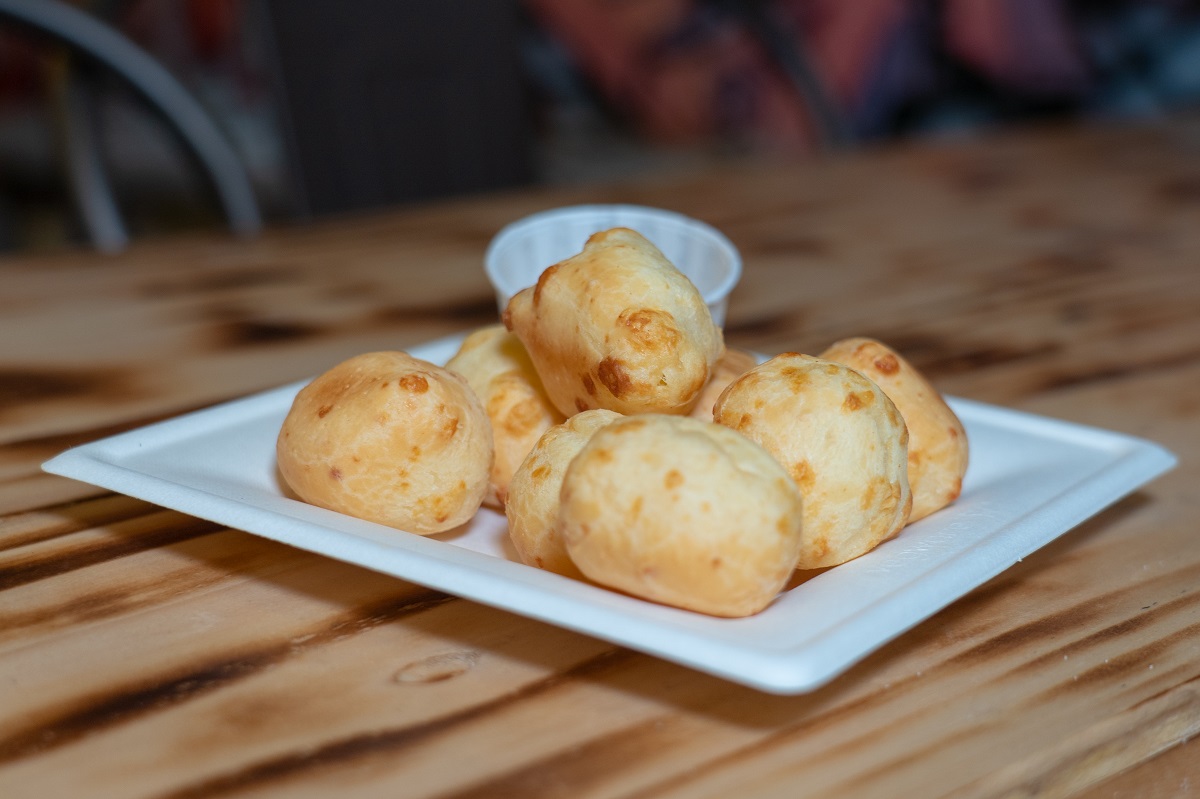
Pao de Quejio // KBOM Bar + Kitchen
Brazilians will knock a couple of these cocktails back with various fried snacks at one of the many bars you’ll find in any city, town or village. KBOM don’t disappoint in this respect either, with Pastéis (deep-fried parcels of crisp cheese-filled pastry), Coxinha (‘little thighs’) made with shredded chicken and mashed potato and shaped like a voluptuous thigh, and the most popular snack in Brazil – Pao de Quejio – little cheesy dough balls with their special Piri Piri house mayonnaise for dipping.
One thing we know Brazil for is its barbeque. Traditionally, South America’s food presence in the UK has been dominated by these theatrical BBQ joints like Bem Brazil and Fazenda to name but a few.
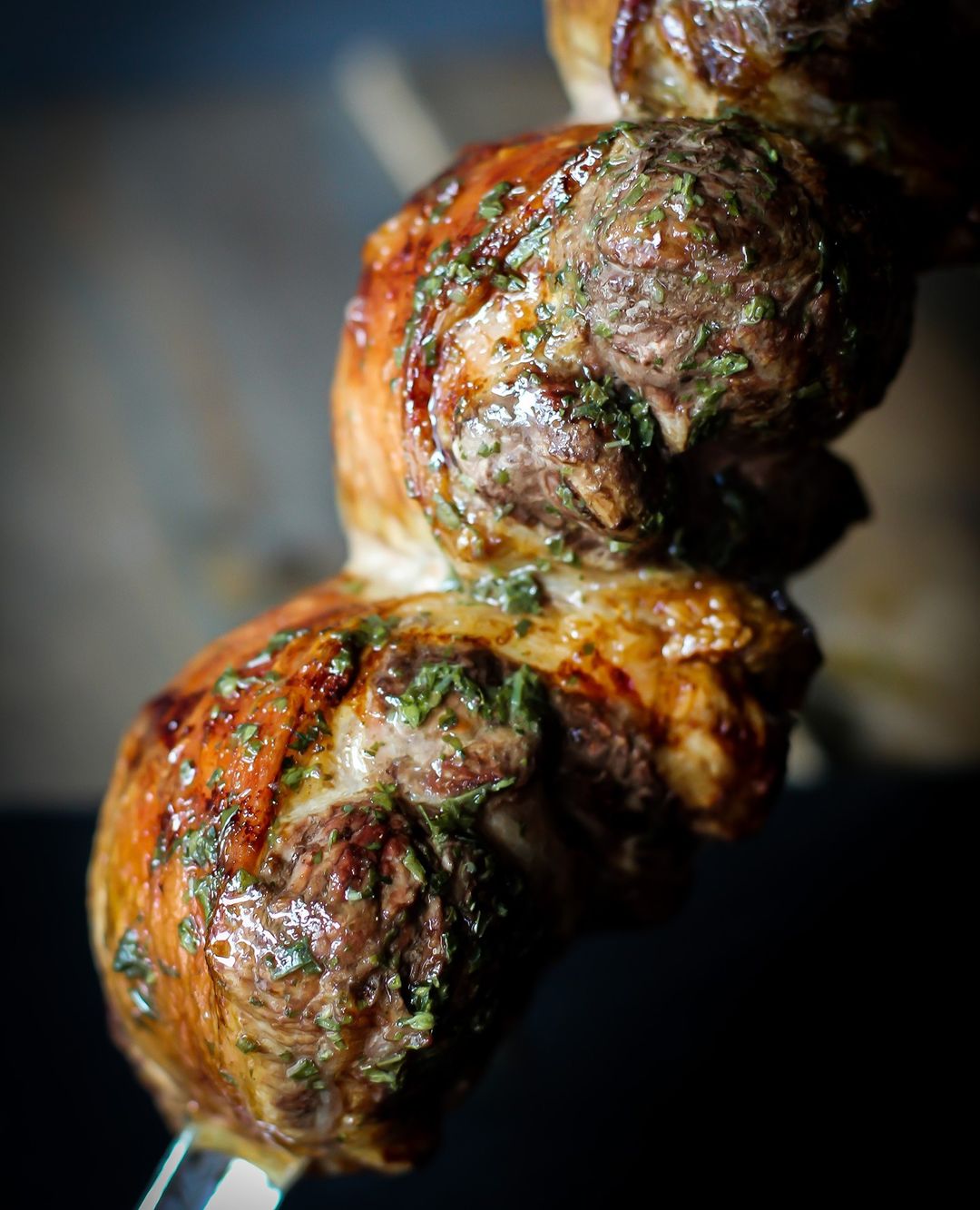
Guaranteed ‘meat sweats’ // Fazenda
Expect prime cuts of beef cooked pink over hot coals, as well as more interesting things like sausages, chicken hearts, kidneys, queijo coalho (squeaky cheese on a stick), lamb and even wild boar making an appearance on the grill.
I think the thing that is most famous about Brazilian barbeque is the sheer quantity of it. The meat is eaten leisurely in waves over a whole afternoon and all you have to remember is to bring your stretchy pants.
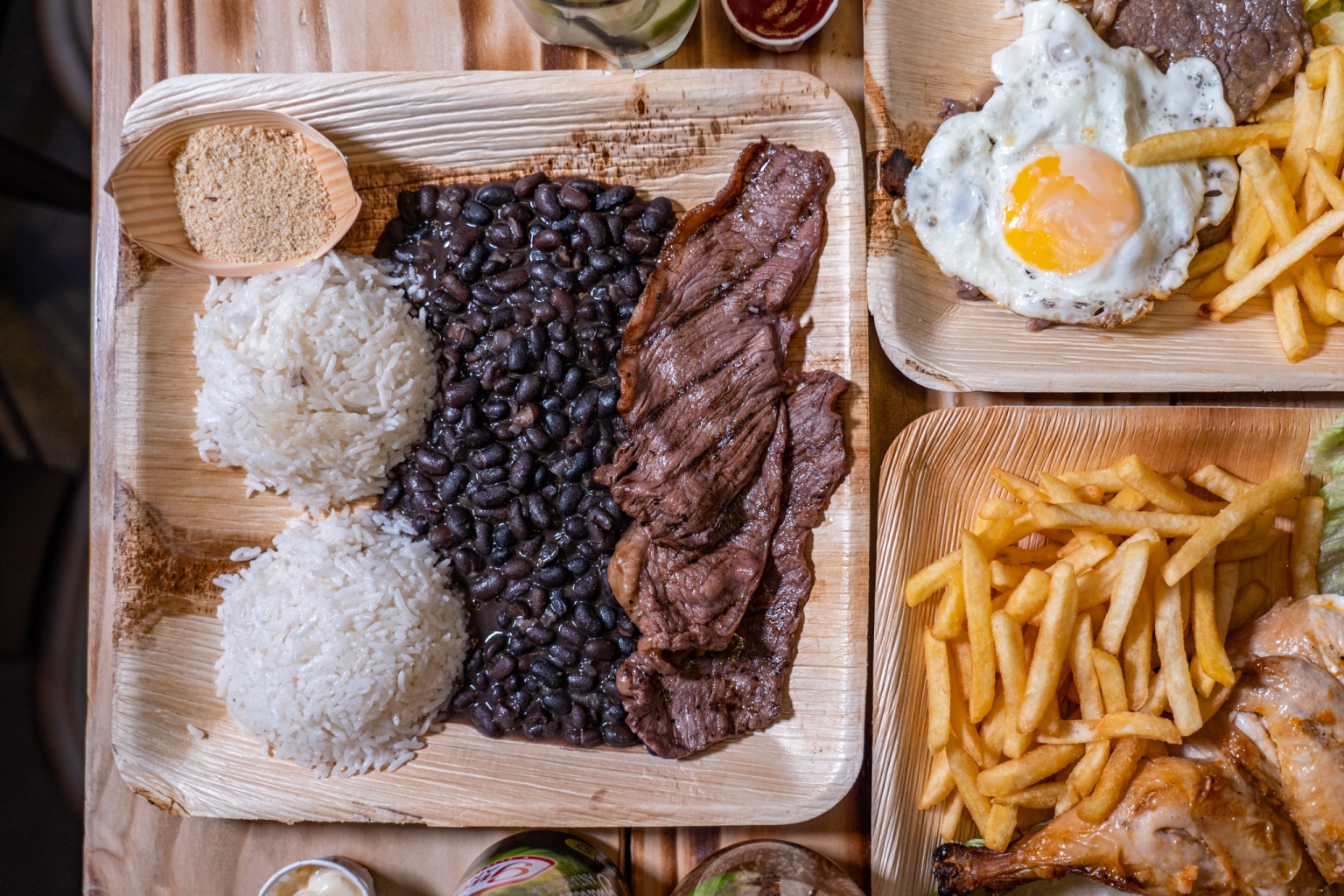
Picanha Steak // KBOM Bar + KItchen
One dish which is eaten across Brazil is Picanha. This is a grilled sirloin steak that’s seasoned and then served up alongside black beans, rice and salad. It’s proper home-cooked food and the Picanha at KBOM comes alongside a little pot of Farofa seasoning, a toasted cassava flour that can be mixed with an array of spices and is then sprinkled on top of the steak and beans for the ultimate taste explosion. KBOM’s is out of this world.
Venezuela + Colombia

In the North of the continent is Colombia and Venezuela – two countries which are quite close in culture and food with considerable influences from Spain, Africa and of course, the indigenous people that came before them.
Empanadas are a food that is now considered to be a flagship for South American cuisine – and are eaten all over the continent, although most people think they were originally brought over from Spain. In short, these are basically half-moon shaped pasties, filled with spiced meat or cheese.

Typically, they are eaten as a street snack. The dough is made from wheat flour and animal fat and filled with stewed meat (usually chicken or beef) with lots of spices. You can get them over at Gaucho filled with your choice of beef, humita (corn) or sundried tomato and mozzarella cheese.
Venezuelans and Colombians are into their bread-based foods clearly because another famous dish is the Arepa. This is basically South America’s answer to a sandwich – made with a maize-based dough which is cooked and split into two.
They are typically stuffed with slow-cooked meat, cheese and avocado and are usually eaten daily- kinda like how we are so reliant on the humble butty over here.

A mega arepa // Mia’s Arepas
Easily the best place to get your hands on one of these delicious delicacies is at the Piccadilly Gardens Market which is home to the outstanding Mia’s Arepas – who tirelessly serve up huge arepas stuffed with a variety of fillings.
The signature arepa is surely the classic Pabellon Criollo with seasoned shredded beef, black beans, cheese, mozzarella, plantain and avocado and it was spectacular. I wholeheartedly recommend that you get yourself down there ASAP and give them a try.
Argentina

Argentina is known for a few things across the world. One is Tango (the dance not the pop). Another is the wild and landscape. Another is football. But the thing I know Argentina for is the food and the wine.
I’m too excited to not talk about the beef first, so I am going to dive right in. Argentinian beef is known as some of the best in the world. Restaurants fly the stuff over to the UK because it is really that good, and there are a couple of reasons why.
Unlike Wagyu cattle, it has nothing to do with the breed of the cows themselves. There are lots of different breeds farmed in Argentina, all brought over from Europe in the Spanish invasion in the 16th Century.

So, all that goodness comes down to diet and habitat. Argentinian cows are allowed to roam the countryside, eating a naturally foraged diet of the native grasses. The cows are looked after by Gauchos – South America’s answer to cowboys – who allow the cows to roam free and eat naturally in the lifetime which allows fat to develop slowly and organically.
Another point about Argentinian meat is that it is not well hung. Over here in the UK, we are used to eating beef which can be hung for up to 24 days. The reason for this is to tenderise the meat which in turn produces a pretty strong, almost game-like texture.

Porterhouse Dry Aged Steak at Gaucho
This beef, on the other hand, is best eaten almost immediately which is a testament to the quality of the meat as it does not require hanging to soften it. In turn, this creates a buttery texture and a milder, delicate flavour to the meat.
Here in Manchester, the appropriately named Gaucho is the place to go for authentic Argentinian steak. They have an impressive selection of cuts from Cuadril (rump) to Lomo (fillet) to Tira de Ancho (Spiral cut rib-eye.).
A steak at Gaucho and indeed any steak is incomplete without a healthy dose of another Argentinean classic – chimichurri. This is an oil-based sauce and the go-to condiment in Argentina.

Chimichurri – the Argentinean peppercorn sauce…
It is a green salsa made from finely chopped parsley, oregano, onion, garlic, chilli pepper flakes, olive oil and a touch of acid, like lemon or vinegar. Tangy, garlicky and slightly spiced – no Argentinian steak is complete without it.
Peru
In recent years, Peruvian food as made a name for itself as some of the best and most diverse in the whole of South America. Blessed with fertile jungles, mountains and coastlines, the food from this region is plentiful, diverse and descended from a rich cultural history.
Food from Peru certainly has an archaic fee with the prevalence of ancient grains like quinoa and maize. One of the most staple snacks in this part of the world is Cancha – deep-fried giant corn kernels tossed in salt. These have a unique texture with a crisp outer layer and a satisfying powdery middle. They do great ones over at Flok in the NQ.
These Cancha make the perfect bar snack to go alongside a chilly beer or a Pisco Sour – the national drink of Peru. Pisco is a colourless brandy made from grapes from Peru and Chile. Developed in the 16th century by Spanish settlers, Pisco has a potent smell (not surprising at 48 % proof) with a light mouthfeel.

Pisco Sour // Peru Perdu
The aftertaste is pleasant and sweet and so it makes a nice spirit for sipping over ice. Nevertheless, the Peruvian’s like their Pisco cocktail- more specifically a Pisco Sour made with lime, sugar syrup and egg white for that classic fluffy texture. If you like your short, tart drinks- the Pisco sour if the drink for you.
Pisco Sours are a bit of a cocktail connoisseurs drink, but you do see them around here in Manchester from time to time. One of my favourites is from Tariff & Dale, but I think that has something to do with its proximity to my office on a Friday evening.
One of the best things about Manchester is that it is home to the rather excellent Peru Perdu over at Whitworth Locke, an actual Peruvian restaurant serving up a whole host of speciality dishes and drinks.
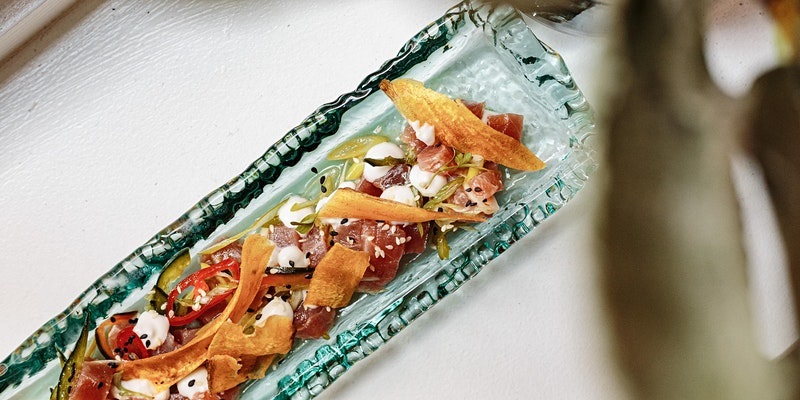
Tuna Ceviche // Peru Perdu
Probably the most famous dish to come out of the country is Ceviche. Considered to be the national dish, it consists of raw, diced fish (one of 2000 species native to the seas in the area) which is marinated in lime juice and spices.
The word ceviche comes from the indigenous Quechua language word ‘siwichi’, meaning fresh fish. The acid in the lime juice theoretically ‘cooks’ the fish and kills harmful bacteria, but keeps its delicate texture intact.
As well as Peru Perdu offering up a true taste of Ceviche, you’ll also find it on many menus throughout the city centre including an exceptional Tuna Ceviche at Gaucho and a lovely Seabass Ceviche at Evelyn’s in the Northern Quarter.
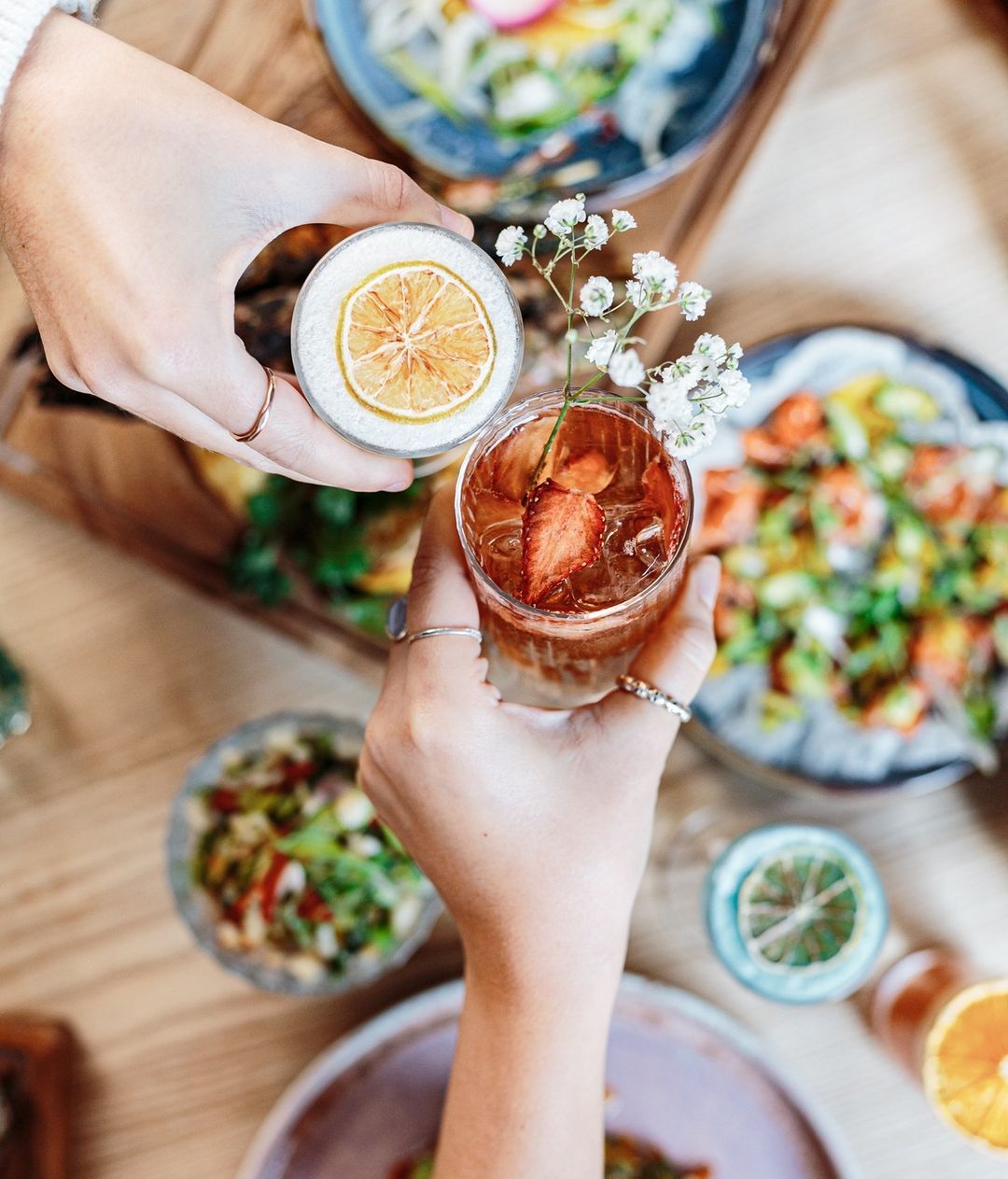
Peru Perdu – the ultimate Peruvian experience in MCR
Peru Perdu is definitely the place to go for exceptional ceviche though, as well as other South American specialties such as Empanadas and their Uruguayan Wet Aged steaks.
There’s plenty to start with there then in terms of South American dishes in Manchester. I think it’s also a guarantee that as the city grows, even more restaurants and offerings from the continent will make themselves known. Who knows, this time next year I could be talking about the newest Bolivian restaurant? Watch this space…


